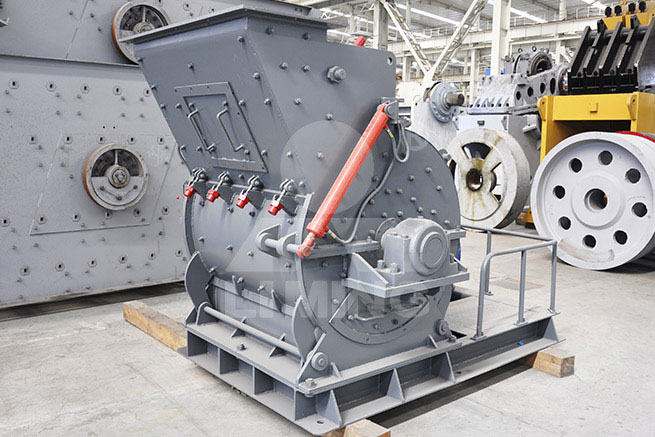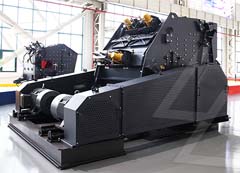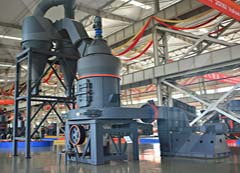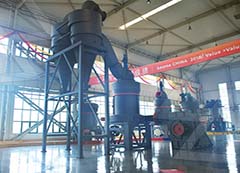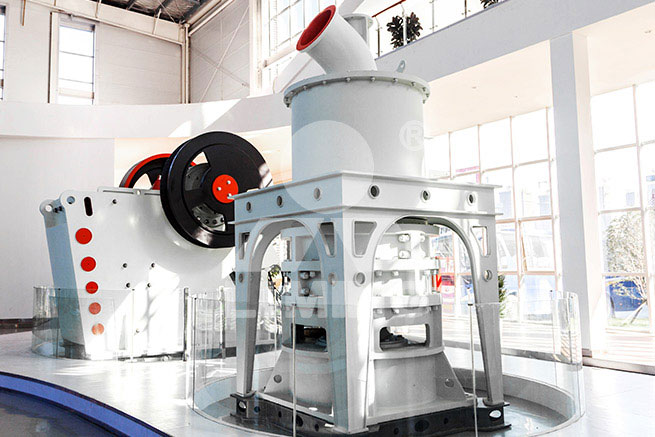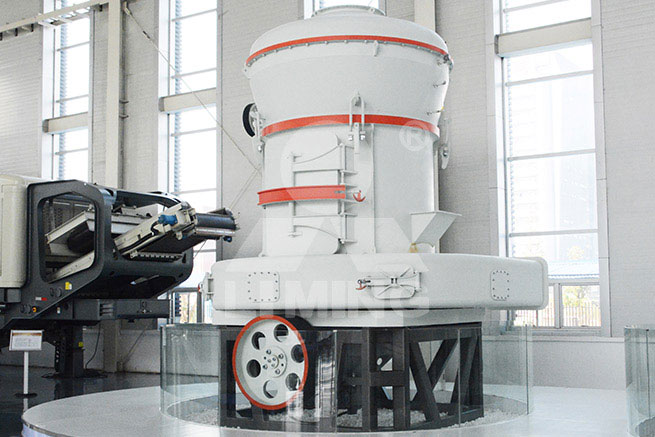crushers process in cement

Cement Crusher | Crushers for Cement Plant | AGICO
Cement Crusher. Crusher is a kind of machinery that is widely used in the cement production industry. It is mainly used in the material preparation process to crush the raw materials into proper size particles. AGICO offers 4 types of crushers for cement plants: hammer crusher, jaw crusher, impact crusher, and cone crusher.
Read More

Impact Crusher - an overview | ScienceDirect Topics
The three types of crushers most commonly used for crushing CDW materials are the jaw crusher, the impact crusher and the gyratory crusher (Figure 4.4).A jaw crusher consists of two plates, with one oscillating back and forth against the other at a fixed angle (Figure 4.4(a)) and it is the most widely used in primary crushing stages (Behera et al., 2014).
Read More

Bulk Cement Crushers | MPD-Inc
Bulk Cement Crushers Is your cement clumped up due to moisture, temperature changes, and long storage times? Integrate our bulk cement crusher to your process that breaks clumps down to your required specs. Ensure seamless mixing and transport through the rest of your process by declumping your material to a uniform powder size. No clumps.
Read More

2 Types of Concrete Crushers | HXJQ
2019-8-1 · The concrete prepared from recycled cement and recycled aggregate can enter the next cycle, which realizes zero waste discharge throughout the whole cycle. Concrete, cement and other wastes in construction waste can be used as building aggregates and recycled brick raw materials after being reasonably crushed, screened and crushed.
Read More

Cement manufacturing process: Step-by-step guide - CCE l ...
2020-7-20 · The rock then goes to secondary crushers or hammer mills for reduction to about 3 inches or smaller. Step 3: Grinding,homogenization and Clinkerization. Next in cement manufacturing process, the crushed rock is combined with other ingredients such as iron ore or fly ash and ground, mixed, and fed to a cement kiln.A kiln is a thermally insulated ...
Read More

Crushers for the Cement Industry | MPD-Inc
2017-2-24 · The Dual Rotor Crusher from Machine & Process Design is made with heavy duty plate steel, robust rotors, and hard-faced crusher teeth, making it well suited for cement and fly ash applications. Air purge seals and air flow meters are provided for crushers in cement terminals due to the dusty environment. We have many of these systems ...
Read More

Cement Crushers and Lump Breakers | Franklin Miler
DELUMPER® Cement Crushers and Lump Breakers have been used by cement companies worldwide to help facilitate flow and increase efficency. These unit are frequently placed on the bottom of a silo to eliminate lumps that developed along the silo walls. They are also used in pipelines to eleminate agglomerations that have formed during process.
Read More

(PDF) SIZE REDUCTION BY CRUSHING METHODS
2022-2-5 · The gyratory crushers are robust crushers with m odern features. They are designed to giv e optimal capacity in primary crushing, increasing the total c apacity in the mining crushing process.
Read More

Modern Processing Techniques to minimize cost in
2013-3-13 · Grinding is a highly energy intensive process in the cement industry. Approximately 60 – 70 % of the total electrical ene rgy used in a cement plant is utilised for the grinding of raw materials, coal and clinker. Various technological improvements from the conventional ball mills in this area include:
Read More

剑桥雅思8 Test3 小作文解析 - 知乎 - Zhihu
2017-2-7 · The second chart illustrates that cement can be used to produce concrete and that the concrete-producing process is much simpler than that of cement alone. The procedure consists only of combining cement, sand, gravel and water in a concrete mixer, and the proportions of each ingredient need to be 15%, 25%, 50% and 10% respectively.
Read More

Cement Crusher Process | Crusher Mills, Cone Crusher, Jaw ...
cement manufacturing process use of crusher | Liming® Crusher. Crusher of Liming® mainly include mobile crusher,jaw crusher,impact crusher,cone crusher,complete crushing line and so on.The crushers are widely used in granite .
Read More

Cement Plant Crushers Manufacturers | Jaw Crushers ...
Jaw crushers. 4. Roller crushers. Hammer Crushers: Raw materials from quarry are now routed in Cement Plant laboratory where, they are analyzed and proper proportioning of limestone and clay are making possible before the beginning of grinding. Generally, limestone is 80% and remaining 20% is the clay. Impact Crushers: Impact crusher is best ...
Read More

Crushers for the Cement Industry | MPD-Inc
2017-2-24 · The Dual Rotor Crusher from Machine & Process Design is made with heavy duty plate steel, robust rotors, and hard-faced crusher teeth, making it well suited for cement and fly ash applications. Air purge seals and air flow meters are provided for crushers in cement terminals due to the dusty environment. We have many of these systems ...
Read More

Cement Crushers and Lump Breakers | Franklin Miler
DELUMPER® Cement Crushers and Lump Breakers have been used by cement companies worldwide to help facilitate flow and increase efficency. These unit are frequently placed on the bottom of a silo to eliminate lumps that developed along the silo walls. They are also used in pipelines to eleminate agglomerations that have formed during process.
Read More

Impact Crusher - an overview | ScienceDirect Topics
The three types of crushers most commonly used for crushing CDW materials are the jaw crusher, the impact crusher and the gyratory crusher (Figure 4.4).A jaw crusher consists of two plates, with one oscillating back and forth against the other at a fixed angle (Figure 4.4(a)) and it is the most widely used in primary crushing stages (Behera et al., 2014).
Read More

Manufacturing process | Lafarge - Cement, concrete ...
2022-2-9 · The cement manufacturing process starts from the mining of raw materials that are used in cement manufacturing, mainly limestone and clays. A limestone quarry is inside the plant area and a clays quarry is as far from the
Read More

Crushers - an overview | ScienceDirect Topics
Crushers. Crushers are widely used as a primary stage to produce the particulate product finer than about 50–100 mm in size. They are classified as jaw, gyratory and cone crushers based on compression, cutter mill based on shear and hammer crusher based on impact.
Read More

Level and pressure instrumentation for the cement industry
2016-4-18 · in rock crushers The large boulders are extracted from the solid bedrock with blasting. This very first stage in the process is needed to enable these very large rocks to be crushed by smaller, secondary jaw and roller crushers, which create the smaller sizes for screening to produce the basic building materials like gravel, grit or sand.
Read More

(PDF) SIZE REDUCTION BY CRUSHING METHODS
2022-2-5 · The gyratory crushers are robust crushers with m odern features. They are designed to giv e optimal capacity in primary crushing, increasing the total c apacity in the mining crushing process.
Read More

剑桥雅思8 Test3 小作文解析 - 知乎 - Zhihu
2017-2-7 · The second chart illustrates that cement can be used to produce concrete and that the concrete-producing process is much simpler than that of cement alone. The procedure consists only of combining cement, sand, gravel and water in a concrete mixer, and the proportions of each ingredient need to be 15%, 25%, 50% and 10% respectively.
Read More

Application Of Impact Crusher In Cement Industry
2021-4-29 · Cement industry in the present scenario is under pressure due to increased competition rising input costs lower realisation and reducing profit margins. . commonly used crushers for such application are impact crushers hammer crushers gyratory crushers and roll crushers. • Depending upon the lead distance between mining area and crusher .
Read More

Crusher in quarry – level control and blockage detection ...
The large boulders are extracted from the solid bedrock with blasting. This very first stage in the process is needed to enable these very large rocks to be crushed by smaller, secondary jaw and roller crushers, which create the smaller sizes for screening to produce the basic building materials like gravel, grit or sand.
Read More

Manufacturing process | Lafarge - Cement,
2022-2-9 · The cement manufacturing process starts from the mining of raw materials that are used in cement manufacturing, mainly limestone and clays. A limestone quarry is inside the plant area and a clays quarry is as far from the
Read More

in crushers in cement manufacturing process
crushers in cement manufacturing process. 2021-4-22 Crushers In Cement Manufacturing Process. Cement Manufacturing Process Flow Chart Crushing the cement production process most of the raw material to be broken such as mestone clay iron ore and coal mestone is the largest amount of raw materials for cement production the larger the particle size after mining
Read More

What is a Jaw Crusher? – MEKA Crushing Equipment
A comparison of jaw crushers with the same capacity reveals that double-toggle jaw crushers are more expensive than ordinary jaw crushers. For this reason, mostly single-toggle jaw crushers are used in the aggregate sector, while double-toggle jaw crushers are used mostly for crushing very hard and highly abrasive materials.
Read More

CRUSHING SCREENING
2017-5-30 · Unlike other types of impact crushers, vertical shaft impact crushers (VSI) are designed with a unique rock-on-rock crushing principle, which significantly reduces the wear costs while offering superior cubical shape for the best quality fine aggregate produc-tion. VSI crushers are usually used in the final stages of the crushing process to shape
Read More

Level and pressure instrumentation for the cement industry
2016-4-18 · in rock crushers The large boulders are extracted from the solid bedrock with blasting. This very first stage in the process is needed to enable these very large rocks to be crushed by smaller, secondary jaw and roller crushers, which create the smaller sizes for screening to produce the basic building materials like gravel, grit or sand.
Read More

Crushers - All crusher types for your reduction needs ...
The primary impact crushers are used to process from 200 t/h up to 1900 t/h and feed sizes of up to 1830 mm (71") in the largest model. Primary impact crushers are generally used in nonabrasive applications and where the production of fines is not a problem. Of all primary crushers, the impactor is the crusher that gives the best cubical product.
Read More

(PDF) SIZE REDUCTION BY CRUSHING METHODS
2022-2-5 · The gyratory crushers are robust crushers with m odern features. They are designed to giv e optimal capacity in primary crushing, increasing the total c apacity in the mining crushing process.
Read More

(PDF) Analysis of material flow and
2015-8-1 · In 2019, the emissions are 1.87 ± 0.16 mMt from the process-related, 1.52 ± 0.34 mMt from the combustion-related, and 0.062 ± 0.004 mMt from the electricity use activities during the cement ...
Read More
- << Previous:Sale Used Hammer Mill Equipment
- >> Next:Aggregate Stone Quarry In Nigeria


